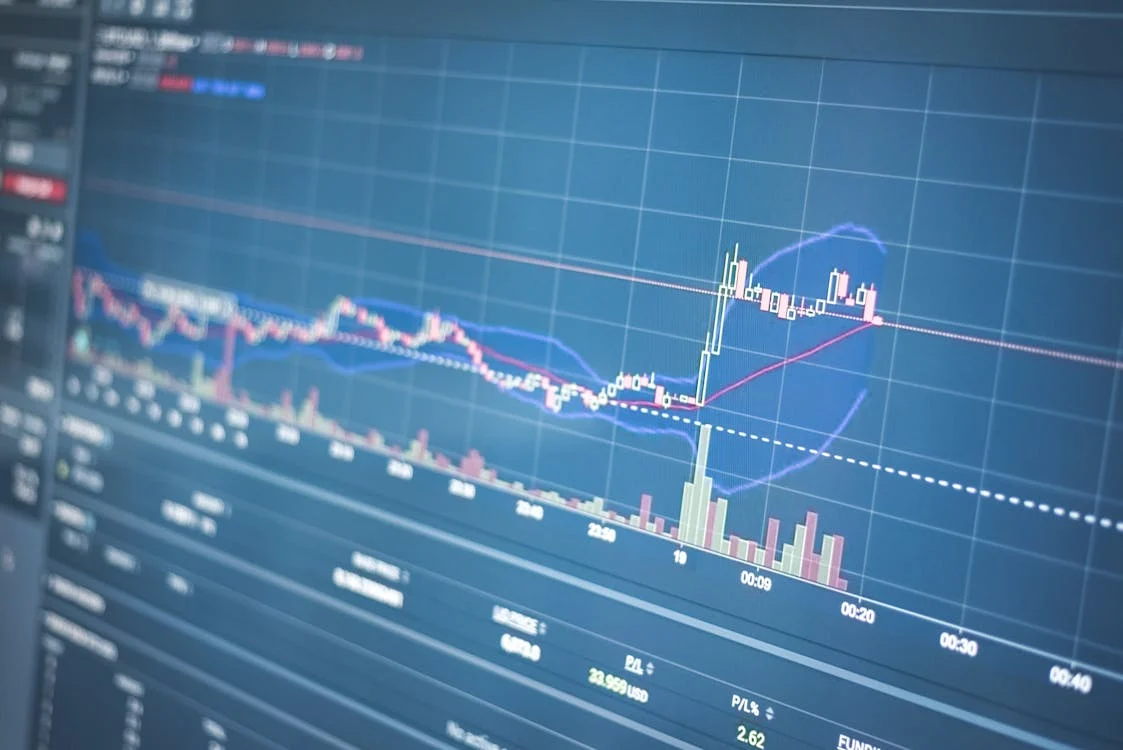Commodity trading is among the most popular investment ventures traders explore in the financial markets. Whether you're a quant trader or looking to explore financial trading using code, this article will walk you through what commodity trading is and how to implement trend-following strategies in code.
What Is Commodity Trading?
Commodity trading involves buying and selling commodities like gold, oil, copper, and natural gas. Although commodities are physical products, traders and investors can leverage online trading platforms to trade and profit from them. Commodity trading is similar to trading stocks, options, and futures. It relies on market price fluctuations, making it essential to understand how to track price trends.
One factor to consider when deploying commodity strategies is the influence of economic indicators like interest rates. Understanding how interest rates affect bullion prices can provide valuable insight, particularly when trading precious metals like gold and silver, which are directly impacted by rate changes.
What Is a Trend-Following Strategy?
A trend-following strategy is a trading approach that requires identifying and leveraging market trends. This strategy relies heavily on analyzing historical price data to predict whether an asset's price increases or decreases over time. The goal is to buy assets when they are rising in value, which is the uptrend, and sell them when they are declining, as in a downtrend. Using this trend analysis approach, traders can determine if a commodity is worth buying or selling at a specific time.
Trend-following strategies are commonly used by algorithm traders who use trading bots to adjust position entries based on current market movement. The algorithm uses code that incorporates a large database of the assets' past prices and works to identify patterns that signify an incoming price increase or decrease. This way, the algorithm detects new trends, and the trader can take advantage of the signal to make a profit. Going forward, these algorithmic trading strategies can be automated so traders can take advantage of short-term price movements in the market.
Types of Trend-Following Strategies
There are several technical indicators traders commonly use to identify optimal entry and exit points In commodity trend-following.
Simple Moving Average (SMA) Crossover strategy
One popular method is the Simple Moving Average (SMA) Crossover strategy, which involves tracking two moving averages: one short-term and the other long-term. A buy signal occurs when the short-term SMA crosses above the long-term SMA, indicating the start of an uptrend. Conversely, a sell signal is generated when the short-term SMA crosses below the long-term SMA, signaling a potential downtrend.
Bollinger Bands
Another widely used indicator is the Bollinger Bands, which use a moving average and two standard deviation lines to create upper and lower price bands. When a commodity's price moves toward the upper band, it may indicate overbought conditions, suggesting a potential sell. When the price touches the lower band, it might indicate oversold conditions and a possible buy signal.
Relative Strength Index (RSI)
The Relative Strength Index (RSI), a momentum oscillator, is also crucial in commodity trading. RSI readings above 70 often signal that a commodity is overbought, while readings below 30 point to oversold conditions. This helps traders easily gauge the strength and potential reversal of trends.
MACD (Moving Average Convergence Divergence)
The MACD is a momentum indicator that measures the difference between two exponential moving averages (EMAs). A buy signal occurs when the MACD line crosses above the signal line, suggesting the beginning of upward momentum in the commodity market. Conversely, a sell signalis generated when the MACD line crosses below the signal line, indicating a potential downtrend. Additionally, traders often look for divergence between the MACD and the price chart to signal weakening trends or potential reversals.
How To Use Python to Implement Commodity Trend-Following Strategies in Code
Python has become a popular programming language in quantitative finance due to its extensive libraries and powerful data analysis tools. Here's a step-by-step guide to implementing commodity trend-following strategies in Python.
1. Set Up Your Coding Environment
Before you begin coding, you need to set up your development environment for the project. This includes installing Python and the necessary libraries. If you don't have Python installed, download the latest version from the official website.
Next, install the following key libraries using Python's package installer:
- Pandas: For data manipulation.
- NumPy: For numerical operations.
- Matplotlib: For charting and visualizing data.
- TA-Lib: For technical analysis indicators (optional but useful).
- yfinance: For downloading historical financial data.
You can install these libraries using pip with the following code:
pip install pandas numpy matplotlib yfinance ta-lib
2. Import the Libraries
import yfinance as yf
import pandas as pd
import numpy as np
import matplotlib.pyplot as plt
3. Download Commodity Futures Data
Use yfinance to download required commodity futures data. For this example, we'll use Gold Futures (GLD).
symbol = 'GLD' data = yf.download(symbol, start='2010--01--01', end='2024--01--01')
4. Define a MACD Trend-Following Strategy by Calculating the Short-Term and Long-Term Moving Averages.
short_window = 50
long_window = 200
data['Short_MA'] = data['Close'].rolling(window=short_window).mean()
data['Long_MA'] = data['Close'].rolling(window=long_window).mean()
5. Generate Buy and Sell Signals
We'll now define a function that generates the buy and sell signals based on the moving averages using 1 for buy, -1 for sell, and 0 for hold.
def generate_signals(data):
data['Signal'] = 0 data['Signal'][short_window:] = np.where(data['Short_MA'][short_window:] > data['Long_MA'][short_window:], 1, -1)
6. Visualize the Data by Plotting the Data and Moving Averages
plt.figure(figsize=(12, 6))
plt.plot(data['Close'], label='Commodity Price', color='blue')
plt.plot(data['Short_MA'], label=f'{short_window}-Day MA', color='red')
plt.plot(data['Long_MA'], label=f'{long_window}-Day MA', color='green')
plt.title(f'{symbol} Trend Following Strategy')
plt.legend(loc='best')
plt.show()
7. Backtest and Analyze Performance of Trend-Following Strategy
The next step is to backtest the strategy by calculating the daily returns and integrate strategy returns based on the buy or sell signals.
data['Returns'] = data['Close'].pct_change()
data['Strategy_Returns'] = data['Returns'] * data['Signal'].shift(1)
Next, calculate the cumulative returns and plot a graph of the cumulative returns of the strategy vs. the market.
data['Cumulative_Returns'] = (1 + data['Returns']).cumprod()
data['Cumulative_Strategy_Returns'] = (1 + data['Strategy_Returns']).cumprod()
plt.figure(figsize=(12, 6))
plt.plot(data['Cumulative_Returns'], label='Market Returns')
plt.plot(data['Cumulative_Strategy_Returns'], label='Strategy Returns')
plt.title(f'{symbol} Strategy Performance')
plt.legend(loc='best')
plt.show()
Advanced Enhancements and Future Strategy Development
Setting up trend-following strategies for trading commodities in Python provides a powerful means for analyzing market movements and making data-driven decisions. While this guide focused on basic trend-following implementations using moving averages and the MACD indicator, there's significant room for customization and optimization.
Once you've implemented a basic trend-following strategy, you can explore more advanced integrations. You can try combining MAs with other momentum indicators like RSI or MACD to refine entry and exit signals. Additionally, you can use machine learning algorithms to fine-tune the parameters of your strategy. Remember to thoroughly test any strategy before deploying it with real capital, and consider factors like transaction costs and market liquidity in your final implementation.




